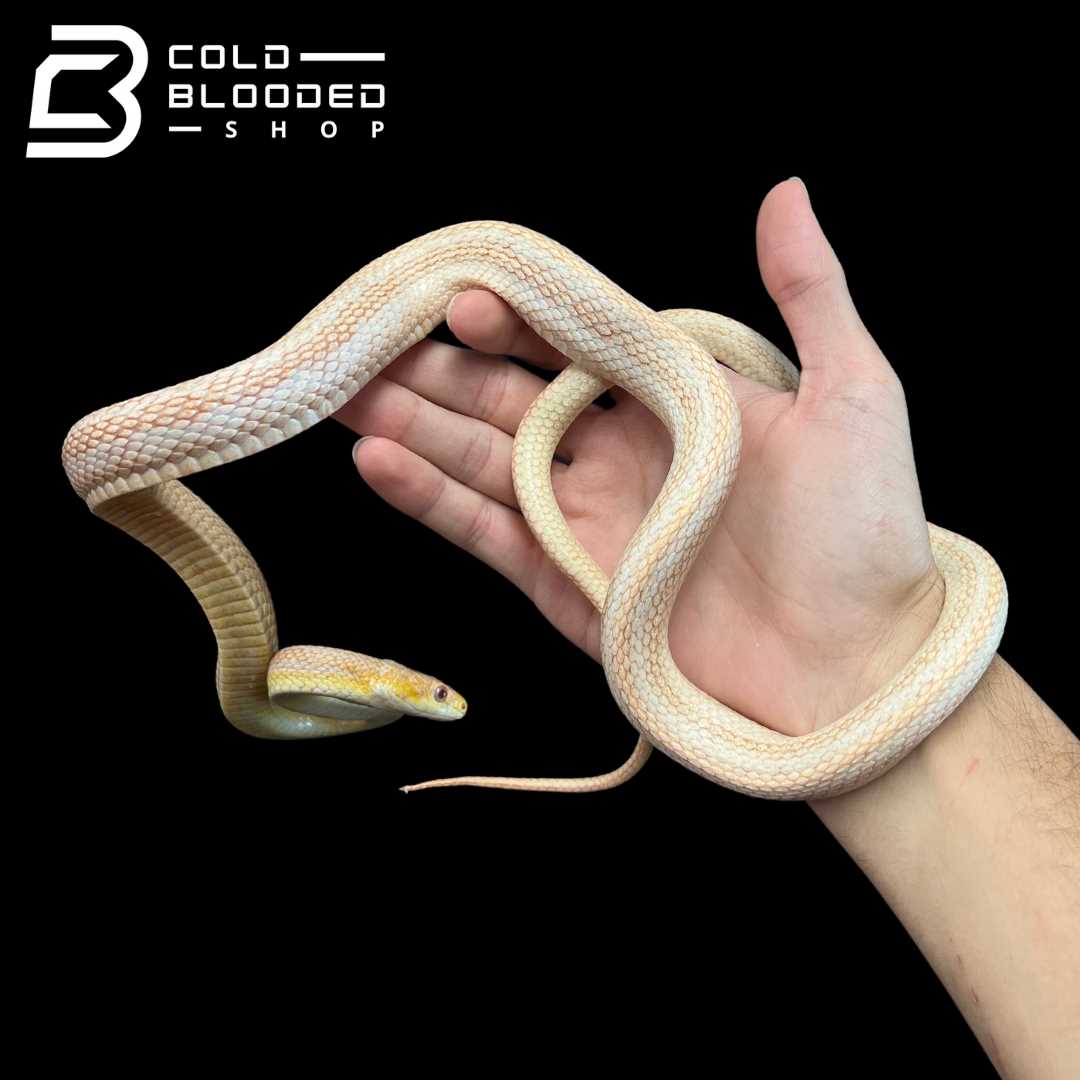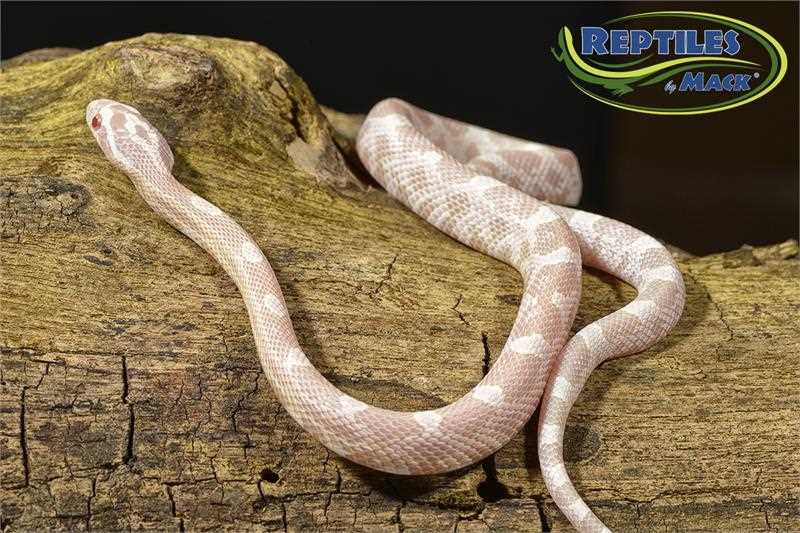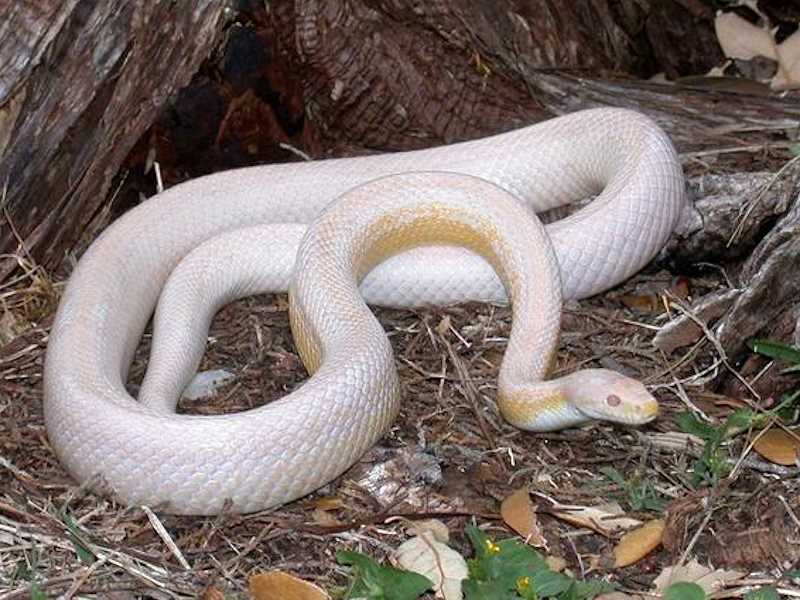Are you considering adding a corn snake to your family? These fascinating creatures are a popular choice for reptile enthusiasts, and the adult snow corn snake is no exception. As a member of the colubrid family, this pet snake is known for its striking appearance and docile temperament. However, just like any other serpent, the adult snow corn snake requires proper care and attention to thrive in captivity.
Caring for Adult Snow Corn Snakes: What You Should Know
What are the characteristics of an adult snow corn snake?
One important aspect of caring for an adult snow corn snake is providing the right enclosure. A spacious vivarium with a secure lid is necessary to ensure the snake’s safety. The enclosure should have a temperature gradient, allowing the snake to thermoregulate by moving between warm and cool areas.
What do adult snow corn snakes eat?
In addition to a proper diet, providing fresh water is essential for an adult snow corn snake. A shallow water dish should be placed in the enclosure, allowing the snake to soak and drink as needed. Keeping the water clean and refreshing it regularly is crucial to maintain the snake’s health and hydration.
How should you handle and socialize with an adult snow corn snake?

When handling an adult snow corn snake, it is recommended to support its body fully. Avoid grabbing the snake by its tail or head, as this can cause injury or distress. Take care to handle the snake with clean hands and avoid sudden movements, ensuring a positive interaction for both you and the snake.
How to Provide the Right Environment for Adult Snow Corn Snakes
Temperature
Temperature plays a crucial role in maintaining the health and well-being of adult snow corn snakes. It is recommended to create a thermal gradient within the enclosure, allowing the snake to regulate its body temperature. One end of the tank should be warmer, with a temperature ranging between 85-90°F (29-32°C), while the other end should be cooler, around 75-80°F (24-27°C). This gradient enables the snake to thermoregulate by moving between the warm and cool areas as needed.
Humidity
Proper humidity levels are necessary to keep adult snow corn snakes healthy. The optimal humidity range for these colubrid snakes is between 40-50%. Maintaining adequate humidity helps with shedding, respiratory health, and overall well-being. Regularly misting the enclosure with dechlorinated water can assist in maintaining the required humidity level. Additionally, providing a humidity box filled with damp sphagnum moss can offer a retreat for the snake during shedding periods.
Substrate
Hiding Places
Adult snow corn snakes require hiding places to feel secure. These can be provided in the form of reptile caves, cork bark, or commercially available hides. Place these hiding spots on both the warm and cool ends of the enclosure to allow the snake to choose its preferred resting area. Having multiple hiding places also helps reduce stress levels and promotes natural behaviors.
Lighting
While adult snow corn snakes do not necessarily require UVB lighting, providing a light cycle that mimics natural daylight is important. Using a timer, provide your snake with 12 hours of light and 12 hours of darkness daily. This helps establish a regular day-night cycle, which promotes a healthy metabolism and overall well-being.
By creating a suitable environment for your adult snow corn snake, you are ensuring its comfort and promoting a healthy and happy life. Paying attention to temperature, humidity, substrate, hiding places, and lighting will contribute to the well-being of your beloved pet.
Feeding and Nutrition for Adult Snow Corn Snakes

Proper feeding and nutrition are essential for the health and well-being of adult snow corn snakes. As a pet reptile, these adult corn snakes require a balanced and appropriate diet to thrive in captivity.
1. Types of Food
2. Feeding Schedule
3. Handling Precautions
After you have fed your adult snow corn snake, it is essential to avoid handling it for about 48 hours. This is to allow the snake to digest its food properly without any disturbance. Handling too soon after feeding can potentially cause regurgitation and other digestive problems.
4. Hydration and Water Bowl

It is crucial to provide a shallow water bowl filled with clean, fresh water at all times. Your adult snow corn snake needs access to water to stay hydrated and aid in digestion. The water bowl should be large enough for the snake to soak in if desired, but not so large that it is cumbersome or difficult for the snake to access.
5. Vitamin and Calcium Supplements
Supplementing your adult snow corn snake’s diet with calcium and vitamin D3 is important to prevent nutritional deficiencies. Dusting the prey with a reptile-specific calcium and vitamin supplement before feeding can help ensure your snake receives the necessary nutrients.
6. Monitoring Feeding Habits
Regularly monitoring your adult snow corn snake’s feeding habits is essential to ensure it is eating well and maintaining a healthy weight. If you notice a decrease in appetite or any changes in behavior, it may be a sign of an underlying health issue, and you should consult a reptile veterinarian.
Handling and Socializing with Adult Snow Corn Snakes
Handling and socializing with adult snow corn snakes is an important aspect of caring for these reptiles. While they may not crave human interaction like some other pets, it is crucial to establish a bond of trust between you and your snake.
Once the snake is on your arm or hand, provide support along the length of its body to ensure it feels secure. Remember, snakes are constrictors and can feel threatened if they sense instability or insecurity.
Socializing with your adult snow corn snake can also involve introducing them to new environments and experiences. This helps to enrich their environment and keep them mentally stimulated. You can provide different climbing structures or hiding spots within their enclosure to encourage exploration.
Remember to wash your hands before and after handling your snake to prevent the spread of bacteria or other potential contaminants. Snakes, like all reptiles, can carry salmonella, so proper hygiene is essential for both your safety and the snake’s.

I’m Lena Adams—a product of an unconventional upbringing in the African wilderness. My father, a daring explorer of African wildlife, sparked my fascination with reptiles, a passion that intertwined with the tragic loss of my mother during an expedition, leaving an indelible mark on my life. Driven to understand the creatures that captivated my parents, I embarked on my journey, sharing insights about reptiles, frogs, and lizards on my website. Through my explorations and conservation efforts, I honour my family’s legacy while seeking connections—to the creatures, nature, and the mother whose presence I yearn to understand.
